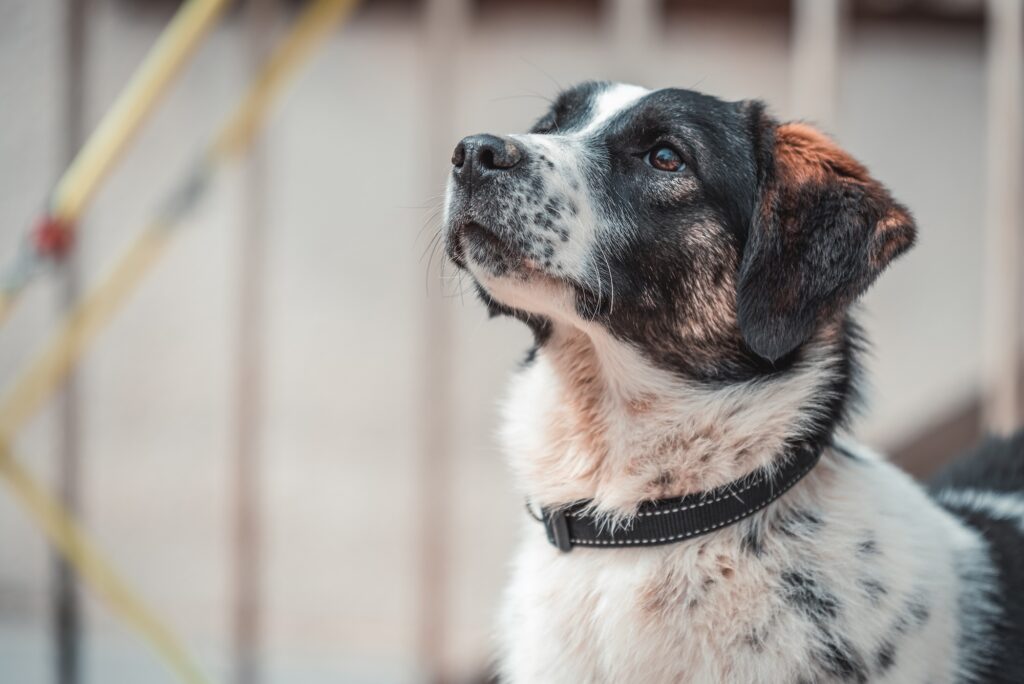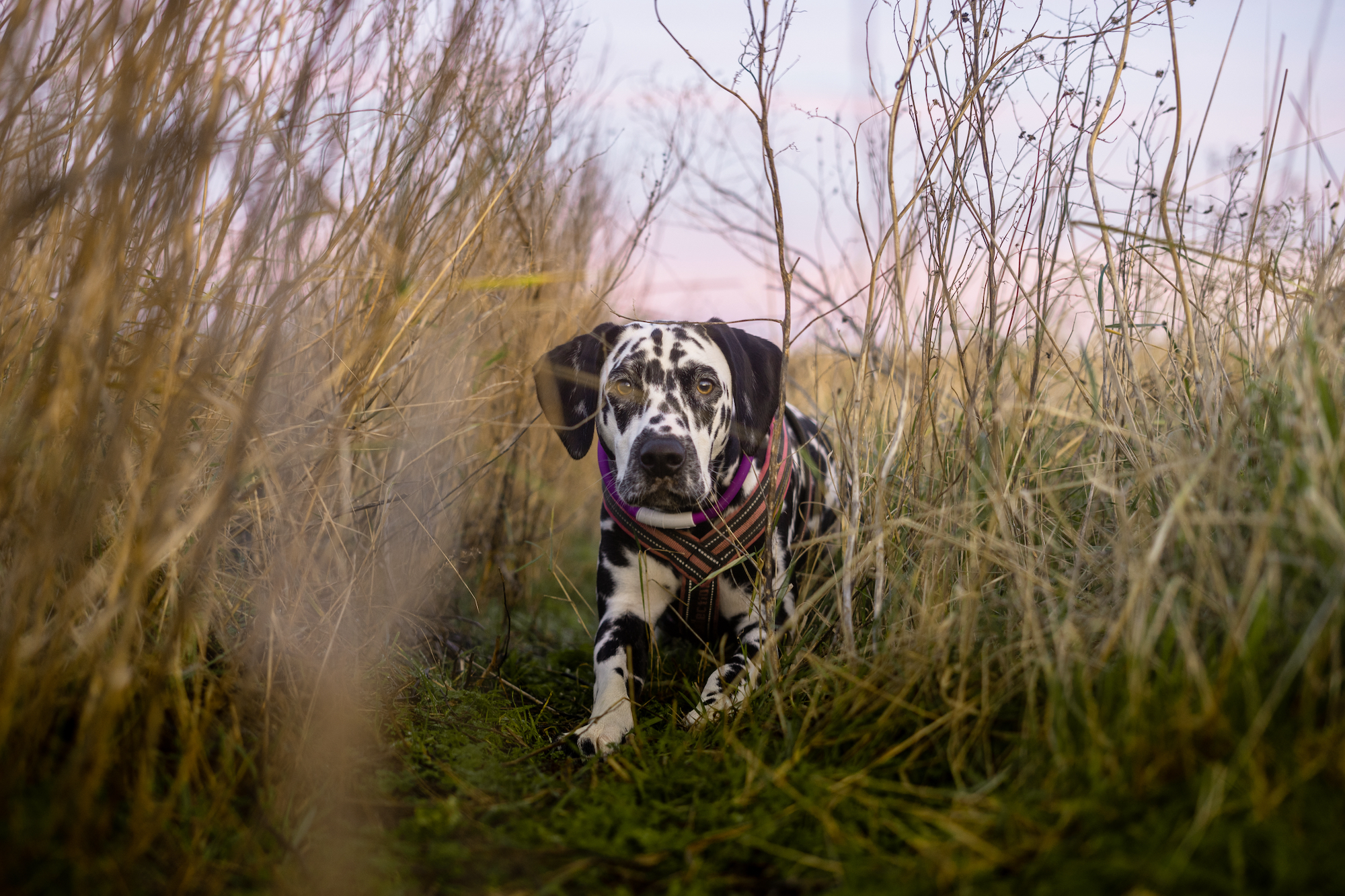This article was updated in June of 2025.
Key points:
- Nearly 3 million dogs entered U.S. shelters and rescues last year.
- Fosters give dogs a safe, happy place to decompress while they wait for their forever homes.
- Seeing dogs in a home environment helps fosters and organizations learn more about their personalities than they’d know from only seeing them in a shelter. When they pass this information along to prospective adopters, it can help make a better match and result in a higher chance that the dog stays in their new home for the long run.
- While giving up a dog you’ve fostered can be bittersweet, it’s rewarding to know that you’ve made such a big difference in their life.
- Every time you foster a dog, you’re not only helping them—you’re also freeing up space and other resources so the shelter and rescue organization can start saving another dog.
- Be honest about your household situation and lifestyle when you’re applying to foster—that will help the organization find the right match for you.
- Ask the organization questions about your responsibilities and how they’ll support you.
- Be ready with the things you’ll need to take care of the dog. Sometimes the organization will help you with supplies or expenses.
According to the ASPCA, nearly 3 million dogs entered U.S. shelters and rescues in 2024. We all know that these dogs need forever homes. But, in many cases, they also need a safe, happy place where they can live while they wait for their new family. This is where fosters come in; they’re some of the most important people in a rescue dog’s life.
Marta Kenar, founder and Executive Director of MCP Rescue & Outreach in Chicago, Illinois, says: “Foster families are the backbone of our efforts.” And fostering is not only crucial for the organizations and the dogs they serve; it’s also rewarding for the people who do it.
Having said that, it’s vital to go into fostering with open eyes—so here’s a primer on what to expect if you choose to take the plunge.
Why you might want to foster a dog
The reasons to foster a dog are straightforward: You’ll be making a huge difference in that dog’s life, and also giving the shelter and rescue organization a chance to start saving another dog’s life.
And, while there’s a lot of hard work involved, dogs are great company. If you can’t commit to spending the next 10 to 15 years caring for a dog, fostering is one way that you can still help them.
Jennifer Siegel, founder of Bosley’s Place—an organization in the Atlanta area that cares for neonatal and underage puppies—sums it up this way: “It’s a sacrifice, it’s volunteer work, but there actually is a paycheck… It’s seeing [the dogs] thriving and happy.”
All of the people we spoke to who’ve dedicated themselves to rescuing dogs had affecting stories about animals they’d rescued. Kenar told us about Marvel, a senior dog who was skeletal and bald, and who—due to a severe infection impacting his jaw—had no ability to chew food. When she took Marvel in, Kenar says, the person who handed him over asked her to “give him at least one good day.” But, in spending time with the dog, she saw that he had a will to live. Eventually, she gave him to a veterinarian as a “hospice foster”—but, with the specialized care he needed, he ended up living for another year and a half. “He lived on slurry,” Kenar says, since he couldn’t chew. But “he grew all of his hair back—he was a fuzzy bear and loved his life.” Not every foster story is that dramatic, but they all involve saving a real, individual dog’s life.

A happy home
Fosters can give dogs a chance to decompress after time in a shelter and get used to life in a home with people.
Kenar says that “decompression is a two-week minimum period where you allow for ease and a very simple routine.” The rescue organization you’re working with can give you details, but it’s important to keep the dog’s life predictable during this time. This means no unusual guests, no parties, and no prolonged absences. This dog has already been through a lot of change.
“Imagine being a human plucked out of your life or deserted, or whatever happened to you,” says Kenar. “The dog needs to learn that it is safe. The dog needs to learn your routine.” She also emphasizes the importance of taking it slow with your foster dog and recognizing that they don’t really know you yet. “Imagine if you had met your partner,” she says, “and all of a sudden—instead of holding hands and walking and talking—they grabbed you and threw you into a family party and expected you to be happy.”
“We’re really adamant about the ‘3-3-3 rule,’” says Savanna Mitchell, co-director of Rural Dog Rescue’s foster program. This refers to the idea that dogs take around three days to adjust to a new environment, three weeks to train and bond, and three months to experience more socialization and show more of their personality. It’s not an exact science—but the main point is that a dog needs kindness, patience, and as much stability as you can provide during this transition period.
Learning more about the dog
Knowledge about a dog’s behavior and preferences is key to getting them into the right forever home. There is only so much an organization can learn by watching a dog in a shelter. They’re going to show different behaviors in a home—and those behaviors will change as the dog becomes more comfortable after a few days and a few weeks.
“Our return rate is low for a reason,” says Kenar. One big factor is that fosters learn all about dogs’ personalities, and pass that info along to the organization and potential adopters. “The dogs get into a routine thanks to our incredible fosters,” she says, “and we know their routine. We know what makes them successful. We know their likes and dislikes—and that blueprint is then carried on into an application that may be looking for a certain type of dog or for a certain energy level.”
This can mean letting prospective adopters know whether the dog has issues with separation anxiety or guarding, if they still sometimes have accidents in the house, what they like to do for fun, or anything else relevant—the more the organization and the dogs’ potential new family know, the more likely they are to make the right decision.

How to foster a dog
To foster a dog, get into contact with the organization you’d like to work with. They’ll likely be happy to hear from someone who wants to help—so the next step will be to figure out whether you’re a good match. That will mean both of you asking questions.
“I think it’s really important,” Mitchell says, “to find the right organization for you. Understanding: ‘How does this organization operate, what types of dogs do they usually cater to? What is the time commitment? What are the costs and responsibilities?’”
Here are some more specifics.
Preparing to foster
The door may be wide open for fosters at most organizations—but there are still some important things to consider and plan for before taking on this responsibility.
Be sure you have the cooperation of other members of your household—everyone needs to be on board, even if they’re not taking an active role in care. This cooperation extends to the animals in the house—make sure any existing pets will tolerate a new friend, and that the dog you’re fostering can be around other animals.
Be realistic about how much time you can devote to caring for a dog. Consider your experience with dogs, and your appetite for walking! Each dog’s situation is different, and each dog will require a different degree of time, patience, and attention.
Kenar emphasizes the importance of prospective fosters being honest with themselves—and of organizations being honest with them. “I’ve heard fostering being sold as, ‘it’s a cinch,’” she says. “No… I think if you prepare yourself that you’re capable of doing hard things it’s less disruptive to your lifestyle.” There will be parts that are hard, but there will also be rewards.
“We get a lot of people that want to foster,” Siegel says, “because puppies are really cute. And then they get them home and they’re like, ‘Oh, puppies poop.’”
Ideally, have an idea of the type of dog you’re looking for and communicate your preferences to the rescue organization right from the start of the process. Since some dogs are generally harder to place—such as dogs with medical conditions—it’s important that applicants are clear about what type of pet they’re willing to welcome into their home. Think about what a dog’s size, activity level, training needs, and medical issues would mean for you.
Be honest with the rescue organization about your lifestyle and living situation—including your work commitments, your financial limitations, and how you plan to provide the dog with the attention and exercise they need.
You may also want to take into account whether the shelter will cover medical expenses such as veterinary visits or medications like flea and tick preventives, as well as basic supplies like bowls or collars. Many organizations will provide a “foster kit” with basic supplies.
Getting your home ready
Make a plan for where your foster dog will hang out and sleep, and spend some time “dog-proofing” your home. Remove any safety hazards, like exposed wires. Place plants out of reach (keeping in mind that dogs can stand on two legs, and jump, when motivated). Don’t leave food—or other tempting chewables, like shoes—within mouth’s reach.
The first few days…
Every dog reacts to being in a shelter differently, but it’s a stressful situation for just about all of them. Your foster dog may be a ball of energy when you bring them home, or they may be shy and reticent about interacting. They may whine, pace, or have accidents. Give them time to adjust without introducing any additional stress or major new activities. Some experienced fosters recommend that, if it’s possible, you clear your schedule on the first day your foster dog comes home, to give both of you the time to bond, build trust, and deal with anything unexpected.
Keep in mind that no matter how you prepare, you probably can’t predict how your fostering stint will go. You may not have a complete picture of the dog you’re fostering—and it might be more, or less, work than you think it will be. What you can count on is a memorable and ultimately rewarding experience.
Fostering responsibilities
The most important ingredient in making fostering work for you, and your new dog, is a genuine desire to welcome an animal into your home and make them feel secure and cared for. But it’s also vital to be clear on exactly what’s expected of you.
Before welcoming a dog into their home, potential fosters should be sure to ask the rescue organization about their day-to-day responsibilities—such as house-training or crate training—in order to help make the dog “adoptable” and prepare them for the transition into their forever home.
Every situation will be different and the shelter will specify any special needs. There are, however, some basics.
Best Friends Animal Society says foster families are expected to provide:
- A healthy and safe environment
- Transportation to and from the adoption center and all vet appointments as needed
- Socialization and cuddle time to help teach dogs positive family and pet relationships
- Lots of exercise and positive stimulation to help them develop into great dogs
Any extra progress you can help make with training and good manners will increase a dog’s adoptability. Some organizations partner with trainers and behavior experts to work with dogs—but many dogs will need hands-on work in their foster home, such as house-training. Ask the foster organization what resources will be available to you.
You’ll also want to ask what the organization expects from you as far as marketing—in other words, will the shelter be taking on the full responsibility of finding the dog’s forever home, or will they expect you to post about the dog on social media, take the dog to adoption events, or interview potential adopters?
A fostering checklist
While every foster situation will be different, here’s a checklist of things you’ll probably need to have in your home to be prepared for your new friend:
Food! The shelter will alert you to any specific dietary needs your dog may have. If you’re responsible for food, a subscription service that delivers fresh food to your door can help.
Food and water bowls: Some seasoned fosters, and health and behavior experts, recommend slow-feeding bowls—which can reduce the speed at which a dog gulps down food and provide some mental stimulation.
A collar or harness and leash: The shelter may provide you with a collar or harness, or advice on which type to use. Collars should have ID tags.
A crate: This is another item that the shelter or rescue may provide. If they don’t, ask their advice on acquiring and using an appropriately sized crate to give your foster dog a place to go in your home—and to help with house-training, if necessary. The crate should be large enough for the dog to stand up and turn around in, and they should enjoy being in there. The crate should never feel like a punishment.
Bedding: It doesn’t have to be fancy, but be sure to provide your dog with a soft place to lie down and sleep. Ask the shelter about any specific requirements (for example: dogs who struggle with joint pain, or senior dogs, may require more padding).
Toys: Keep them simple and safe. Do not give your foster dog hooves; rawhide; antlers; bones that can break into pieces when chewed; or toys with small, swallowable parts like removable squeakers—and ask your veterinarian for specifics about what chews are appropriate.
A baby gate: If your dog has issues with stairs, or you want to limit their range in your home, a baby gate can be a helpful addition.
Grooming supplies: You may be expected to get your foster dog ready for meeting the public, and a clean coat will give them a better chance at finding a forever home.
Poop bags: There will be poop. Don’t forget poop bags!
Saying goodbye
Prospective fosters often have one big concern: how difficult it will be to let the dog go when it’s time to send them to their forever home. It’s hard, but our foster partners emphasize that it’s also worth it. “You can let them go,” Siegel says, “because then you can save another and feel that good all over again.”
If you really think you won’t be able to let go, find out the organization’s policy on “foster fails.” Rescues want to have as many good foster homes as possible, but some of them will also give fosters priority to adopt a dog. Communicate clearly at the outset so you know the rules.
While it’s always difficult to send a dog to live with someone else after you’ve gotten to know them, it’s also rewarding when you know they’ll have a good home. Kenar says that, at MCP Rescue, dogs have multiple meetings with their forever families and the fosters, so the moment that they start their new life is very positive. Assuming everything goes well, she says, “the third meet is: we take the dog to the adopter’s house and send them off on a walk so that they are moving forward. They’re having a positive experience… the last image the foster has is this dog being ecstatic, moving forward with their new family.”
Siegel describes a moment when she can see the impact her work has on so many dogs and their human families—an annual reunion called “Bosley’s Birthday Bash,” where hundreds of dogs who have come through her organization come together for a backyard barbecue. “It’s such a heartwarming experience,” she says, “seeing them with their families—happy and huge.”




